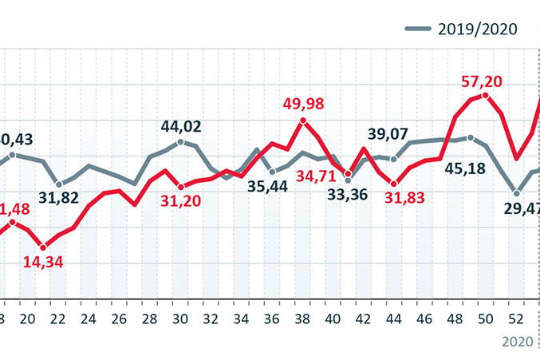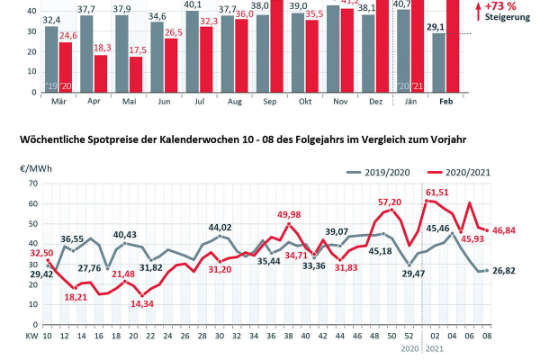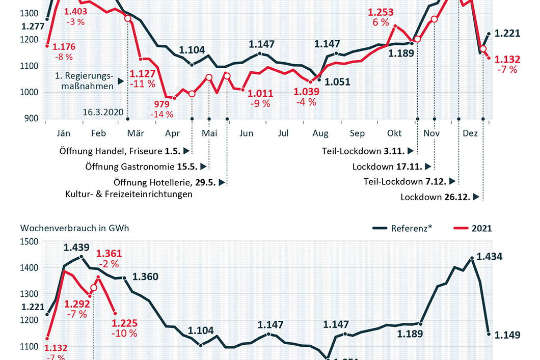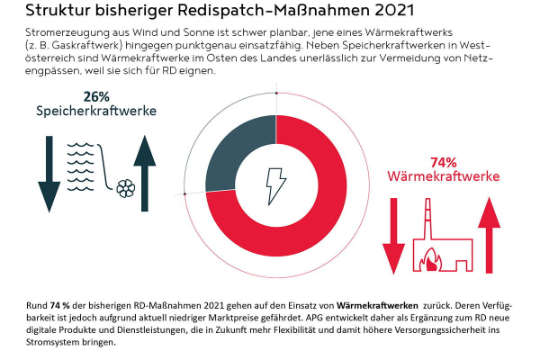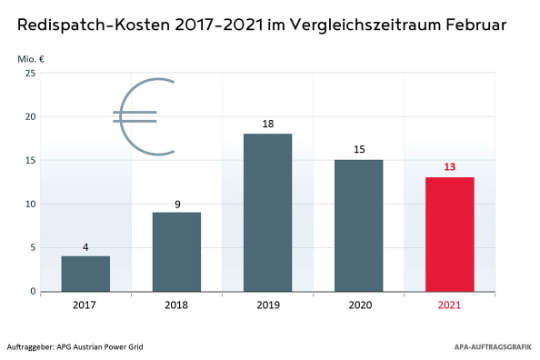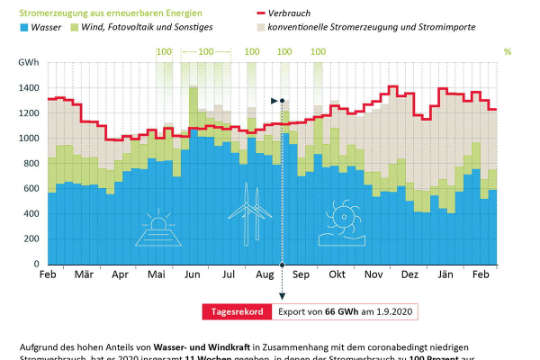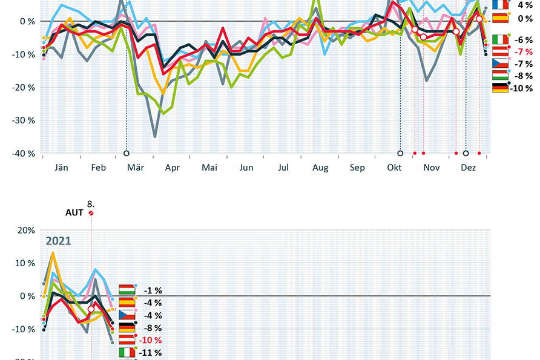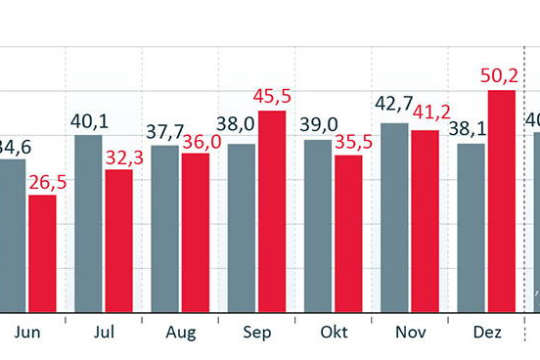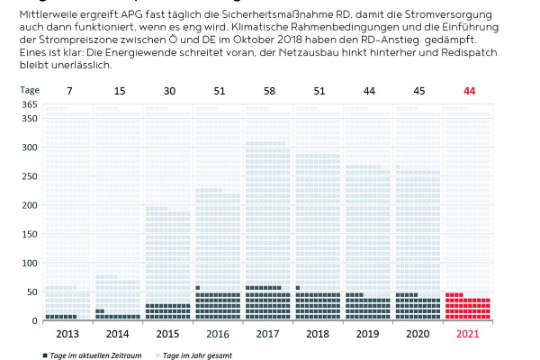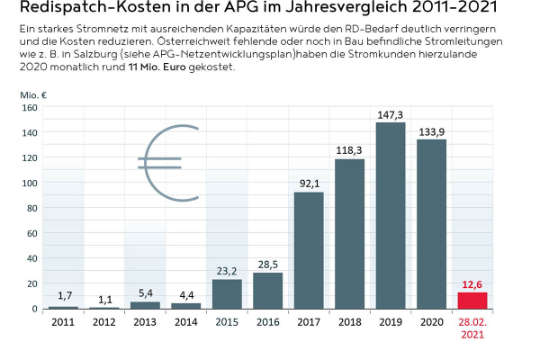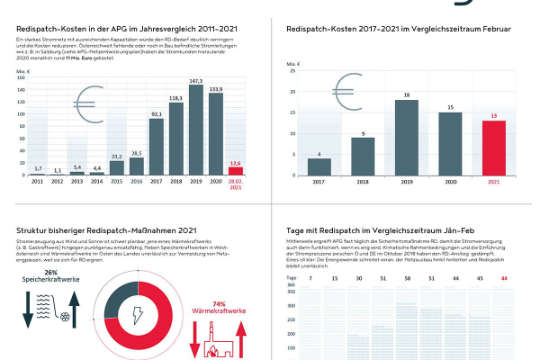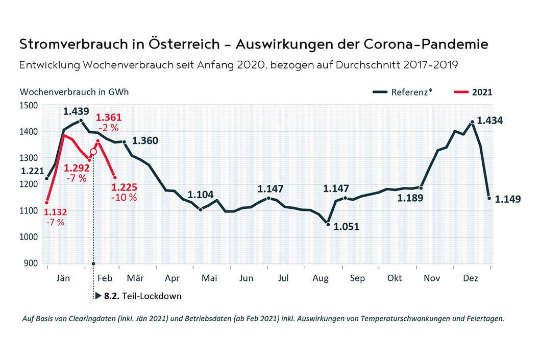End of February, the weekly electricity consumption in Austria was 1,225 GWh which is 10 percent less compared to the average values of the years 2017 to 2019 – i.e. the years before the covid pandemic.
One thing is clear: the existing corona measures – current lockdown plus specific regional measures – still have a slight effect on reducing the domestic demand. However, in contrast to the first lockdown one year ago these effects can be considered minor. “The decisive factor for the current development of the Austrian electricity consumption is the temperature. The mild weather in February and the fact that the days are getting longer reduce the need for heating and use of lighting “, says APG’s CTO Gerhard Christiner.
Also in other European countries a reduced electricity demand can be observed, even though there is some variability: Hungary (minus 1 percent), Spain and the Czech Republic (both minus 4 percent) range only slightly below the average value of the years 2017 to 2019, while Italy (minus 11 percent) and France (minus 14 percent) show a more distinct reduction, with the mild weather being largely responsible for the lower demand.
Production from renewables is gaining momentum
Traditionally, in Austria the share of renewables in the electricity production can be expected to be relatively small during the core winter season (Dec/Jan/Feb). However, once spring and summertime are approaching, production, in particular from run-of-river hydropower plants and photovoltaic facilities, is picking up momentum. This means that during a few weeks in February the gap between the average domestic electricity consumption and the electricity produced from renewables was less than at the beginning of the year. In the second week of February already 70 percent of the demand could be covered with green electricity. Last year, due to favorable conditions in the power industry and good production from renewables, Austria was even able to cover the domestic demand completely with green electricity for a total of 11 weeks.
Austria remains electricity importing country
In February – just like in January – Austria was almost exclusively an electricity importing country. However, the amount of electricity that had to be imported was already a little bit lower. The peak volume was reached mid-February with 67 GWh. February 11 was an exception as Austria was able to export 11 GWh on this day.
Conventional electricity production drives up the price
The electricity price depends on several factors: the current electricity demand, the electricity markets of neighboring countries and the amount of conventionally produced electricity, e.g. gas. The monthly average price in February showed an increase by 73 percent in comparison with last year’s reference period and ranged at 50.4 euros per MWh. “Among other things the reason for the higher price is that compared to the beginning of 2020, in January and February 2021 considerably less electricity could be produced from wind and solar power. Thus more electricity had to be produced conventionally, for instance from gas, which automatically drives up the price. In addition, the gas price is currently quite high“, explains APG’s CFO Thomas Karall. However, this situation does not only affect Austria but also our neighbor Germany and other Central European countries.
Investments are the precondition for a sustainable and secure energy future
In 2021 APG invests approximately 357 million euros in the grid infrastructure. Besides the benefits for the power industry this also means a boost for the domestic economy. “The best production from renewables is of no use if the infrastructure that is necessary to distribute the electricity is too weak or not existent. Without a secure and strong grid the energy transition will remain wishful thinking“, emphasizes Christiner.
Almost daily lacking grid capacities are the reason why interventions in the system to ensure the security of supply are still necessary. Until the end of February redispatch measures had to be undertaken already on 44 days. “In figures this means that the measures have already generated total costs of 13 million euros for consumers, which shows how indispensable and urgently necessary the investments in a modernized and powerful transmission grid are for the security of supply in Austria and for a successful energy transition“, says Karall.
Until 2030 the entire electricity demand in Austria should be covered with renewables, in all of Europe until 2050. Thus Austria intends to expand the production of green energy by 27 TWh: with a share of 11 TWh (11,000 MW) in photovoltaics (PV), 10 TWh (5,000 MW) in wind power, 5 TWh (1,250 MW) in hydropower and 1 TWh (200 MW) in solid biomass. “To distribute and utilize this enormous increase in green energy an accelerated expansion of the infrastructure is necessary, as well as system-wide approaches and the use of new flexibility options in various sectors of trade and industry. With the creation of intelligent digital platform technologies we facilitate the integration of decentralized flexibilities in the energy system“, underlines Christiner.
APG has been keeping track of the development of the electricity consumption since the beginning of the corona crisis and is regularly publishing diagrams at https://www.apg.at/infografiken regarding the topics: energy exchange, energy consumption in Austria, energy consumption in Europe, import/export, electricity prices, etc.
Press contact
Christoph Schuh

